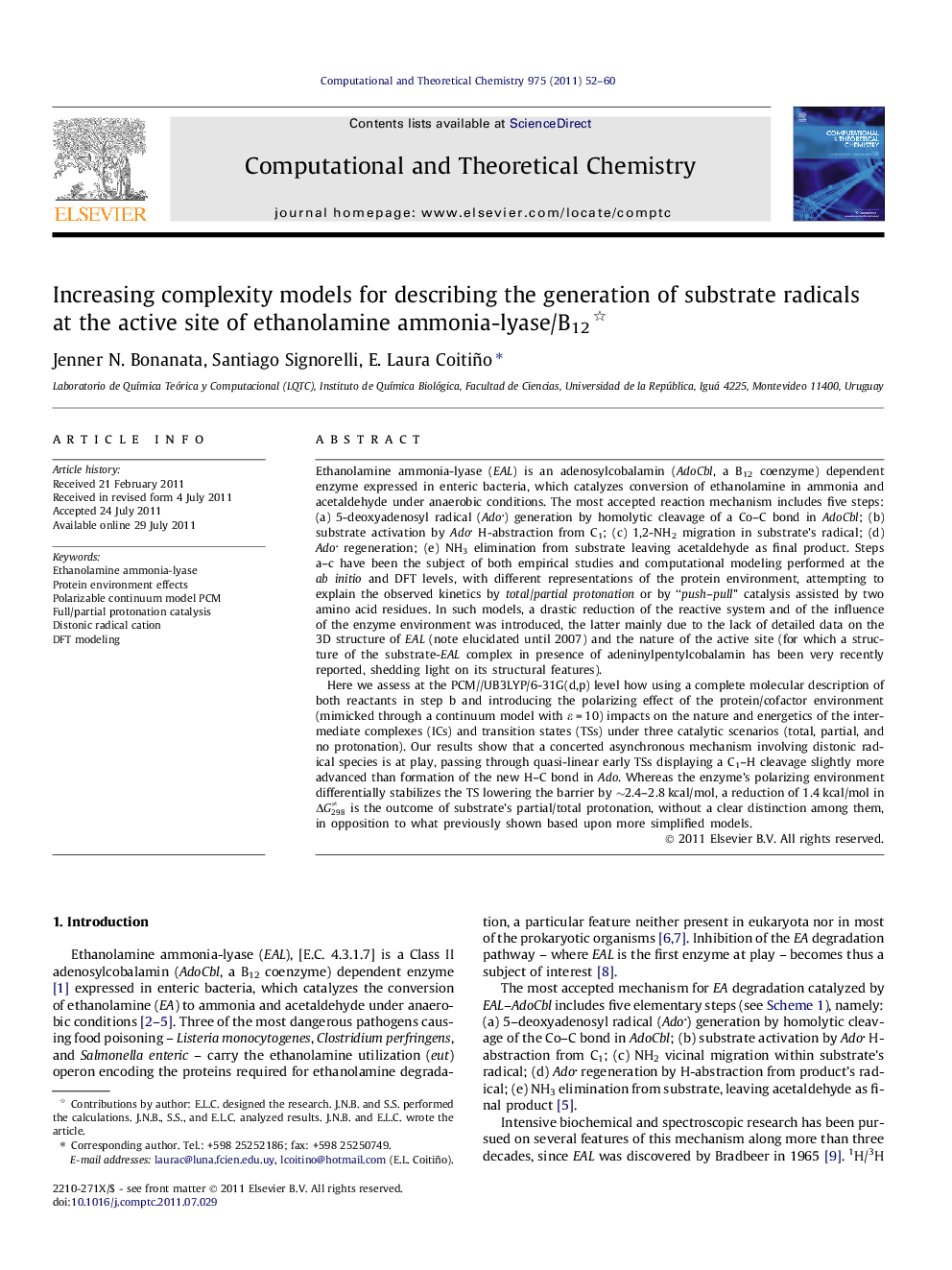| Article ID | Journal | Published Year | Pages | File Type |
|---|---|---|---|---|
| 5394884 | Computational and Theoretical Chemistry | 2011 | 9 Pages |
Abstract
Here we assess at the PCM//UB3LYP/6-31G(d,p) level how using a complete molecular description of both reactants in step b and introducing the polarizing effect of the protein/cofactor environment (mimicked through a continuum model with ε = 10) impacts on the nature and energetics of the intermediate complexes (ICs) and transition states (TSs) under three catalytic scenarios (total, partial, and no protonation). Our results show that a concerted asynchronous mechanism involving distonic radical species is at play, passing through quasi-linear early TSs displaying a C1-H cleavage slightly more advanced than formation of the new H-C bond in Ado. Whereas the enzyme's polarizing environment differentially stabilizes the TS lowering the barrier by â¼2.4-2.8 kcal/mol, a reduction of 1.4 kcal/mol in ÎG298â is the outcome of substrate's partial/total protonation, without a clear distinction among them, in opposition to what previously shown based upon more simplified models.
Keywords
Related Topics
Physical Sciences and Engineering
Chemistry
Physical and Theoretical Chemistry
Authors
Jenner N. Bonanata, Santiago Signorelli, E. Laura Coitiño,
